Popular categories
Looking for a yarn?
Order DROPS Needles & Hooks
Clicking the ORDER button will redirect you to Wool Warehouse Direct Ltd website
The yarn cost is calculated from the pattern’s smallest size and the yarn’s cheapest product type. Looking for an even better price? You might find it on the DROPS Deals!
Shinny Upatree
Knitted trousers for babies and children in DROPS Baby Merino. The piece is worked top down, with Nordic pattern. Sizes 6 months – 6 years.
Change language:
English (US/in)- English (US/in)
- Česky
- Dansk
- Deutsch
- Eesti keel
- English (UK/cm)
- Español
- Français
- Íslenska
- Italiano
- Magyar
- Nederlands
- Norsk
- Polski
- Português
- Suomi
- Svenska
- English (UK/cm), Bulgaria
- English (UK/cm), Croatia
- English (UK/cm), Greece
- English (UK/cm), Latvia
- English (UK/cm), Lithuania
- English (UK/cm), Romania
- English (UK/cm), Slovenia
- Česky, Slovakia
Yarn group A
-----------------------------------------------------------
Sizes: 6/9 - 12/18 months (2 - 3/4 - 5/6) years
Sizes equivalent to approx. height of child in cm:
68/74 - 80/86 (92 - 98/104 – 110/116)
2ft3/2ft5 - 2ft7/2ft9 (3ft - 3ft3/3ft5 - 3ft3/3ft5)
Finished measurements:
Waist measurements: 46-50 (56-60-66) cm = 18"-19¾" (22"-23⅝"-26")
Full length: 44-50 (59-63-70) cm = 17¼"-19¾" (23¼"-24¾"-27½")
All measurements in charts are in cm.
Materials:
DROPS BABYMERINO from Garnstudio (belongs to yarn group A)
150-150 (150-200-200) g color 19, grey
100-100 (100-150-150) g color 02, off white
50-50 (50-50-50) g color 16, red
-------------------------------------------------------
ACCESSORIES FOR THE PIECE:
KNITTING GAUGE:
24 stitches in width and 32 rows in height with stockinette stitch = 10 x 10 cm = 4" x 4".
NEEDLES:
DROPS DOUBLE POINTED NEEDLES SIZE 3 MM = US 2.5
DROPS CIRCULAR NEEDLE SIZE 3 MM = US 2.5: length 40 cm = 16".
The needle size is only a guide. If you have too many stitches on 10 cm = 4", change to a larger needle size. If you have too few stitches on 10 cm = 4", change to a smaller needle size.
-------------------------------------------------------
Alternative Yarn – See how to change yarns here
Yarn Groups A to F – Use the same pattern and change the yarn here
Yarn usage using an alternative yarn – Use our yarn converter here
-------------------------------------------------------
You might also like...
Order DROPS Needles & Hooks
Clicking the ORDER button will redirect you to Wool Warehouse Direct Ltd website
The yarn cost is calculated from the pattern’s smallest size and the yarn’s cheapest product type. Looking for an even better price? You might find it on the DROPS Deals!
Pattern instructions
EXPLANATIONS FOR THE PATTERN:
-------------------------------------------------------
RIDGE/GARTER STITCH (worked back and forth):
1 ridge = Knit 2 rows.
PATTERN:
See diagrams A.1 to A.3. The pattern is worked in stockinette stitch.
INCREASE TIP-1 (evenly spaced):
To work out how to increase evenly, count the total number of stitches on needle (e.g. 108 stitches) and divide by the number of increases to be made (e.g. 26) = 4.15. In this example, increase by making 1 yarn over after approx. each 4th stitch. On the next round work the yarn overs twisted to avoid holes.
INCREASE TIP-2:
Increase 1 stitch by making 1 yarn over. On the next round knit the yarn over twisted to avoid a hole.
DECREASE TIP (for inside of leg):
Start 2 stitches before the marker thread and work as follows: Knit 2 together, slip 1 stitch as if to knit, knit 1 and pass the slipped stitch over the knitted stitch (= 2 stitches decreased).
-------------------------------------------------------
START THE PIECE HERE:
-------------------------------------------------------
TROUSERS - SHORT OVERVIEW OF THE PIECE:
The piece is worked in the round, top down. You fist work a belt with lining and pattern. The piece is divided and each leg is finished separately. Then a cuff is worked with pattern and a lining at the bottom of each leg. The braces are worked back and forth (sideways) and sewn on to finish.
LINING (for belt):
Cast on 108-120 (132-144-156) stitches with circular needle size 3 MM = US 2.5 and grey. Work stockinette stitch in the round. When the piece measures 10 cm = 4", work the next round as follows: * Knit 2 together, 1 yarn over *, work from *-* to end of round (= folding edge). The yarn overs are not worked twisted on the next round - there will be holes. REMEMBER THE KNITTING GAUGE!
BELT:
Then work A.1 (= 12 stitches) over all stitches (= 9-10 (11-12-13) times in width). When A.1 has been worked 1 time in height, the belt measures approx. 11 cm = 4⅜" and the piece a total of 22 cm = 8¾" (including lining).
TROUSERS:
THE PIECE IS NOW MEASURED FROM HERE!
The piece is continued in stockinette stitch with grey.
Knit 1 round and increase 26-24 (22-20-16) stitches evenly on round – read INCREASE TIP-1 = 134-144 (154-164-172) stitches. Knit 1 round.
ELEVATION AT BACK: Now work an elevation at the back of the trousers for a better fit.
Work stockinette stitch back and forth as follows: Start mid back and knit 6-7 (7-8-8) stitches, turn the piece (to avoid a hole slip the first stitch when working back and tighten the strand slightly). Purl 12-14 (14-16-16) stitches, turn the piece. Knit 18-21 (21-24-24) stitches, turn the piece. Purl 24-28 (28-32-32) stitches, turn the piece. Continue like this, working 6-7 (7-8-8) more stitches each time you turn 6 more times (= a total of 10 short rows). Then continue with stockinette stitch in the round over all stitches.
INCREASES: When the piece measures 10-13 (18-20-22) cm = 4"-5⅛" (7"-8"-8¾") from the belt (measured mid front, there is now approx. 5 cm = 2" left before you divide for the legs, insert 1 marker thread at the beginning of the round and 1 marker thread after 67-72 (77-82-86) stitches (mark mid front and back).
Then increase 1 stitch on each side of both marker threads – read INCREASE TIP-2 (= 4 stitches increased). Increase like this every 2nd round a total of 8 times = 166-176 (186-196-204) stitches. After the last increase, the piece measures approx. 15-18 (23-25-27) cm = 6"-7" (9"-9¾"-10⅝") from the belt (measured mid front). The piece measures approx. 37-40 (45-47-49) cm = 14½"-15¾" (17¾"-18½"-19¼") (including lining). Now bind off 6 stitches mid front and back (i.e. 3 stitches on each side of both markers). Each leg is finished separately.
LEG:
THE PIECE IS NOW MEASURED FROM HERE!
Start mid back, knit the first 77-82 (87-92-96) stitches and place the remaining stitches on 1 thread. Change to double pointed needles size 3 MM = US 2.5 and work stockinette stitch in the round. Insert 1 marker thread at the beginning of the round (= inside of leg). When the leg measures 2 cm = ¾" from where the piece was divided, decrease 1 stitch on each side of the marker thread in the 4 smallest sizes (i.e. do not decrease in size 5/6 years) – read DECREASE TIP. Decrease like this every 6th round a total of 2-1 (3-2-0) times = 73-80 (81-88-96) stitches. On the next round decrease 1-0 (1-0-0) stitch = 72-80 (80-88-96) stitches.
When the piece measures 4-6 (9-10-14) cm = 1½"-2⅜" (3½"-4"-5½") from where the piece was divided, decrease as follows on the next round: * Knit 2 stitches, knit the next 2 stitches together (= 1 stitch decreased) *, work from *-* over all stitches = 54-60 (60-66-72) stitches. Then work A.2 (= 6 stitches) over all stitches (= 9-10 (10-11-12) times in width). When A.2 has been worked 1 time in height, the leg measures 10-12 (15-16-20) cm = 4"-4¾" (6"-6¼"-8") from where the piece was divided.
LINING (bottom edge):
Then work a lining with grey (it will later be folded up and sewn to the leg) as follows:
* Knit 2 together, 1 yarn over *, work from *-* over all stitches (= folding edge). THE PIECE IS NOW MEASURED FROM HERE!
Then work the lining as follows: Work stockinette stitch in the round (yarn overs are not worked twisted). Bind off when the lining measures 6 cm = 2⅜" from the folding edge. Work the other leg in the same way.
ASSEMBLY:
Fold the lining at the top of the trousers to the wrong side of the belt and sew down with grey; you should sew to a row of grey on the belt. If it is too tight or loose, adjust this (then sew with the same color as the round you are sewing onto).
Do the same at the bottom of each leg.
BRACES:
The braces measure approx. 27-28 (30-32-35) cm = 10⅝"-11" (11¾"-12½"-13¾") in length when finished; there is 5 cm = 2" extra in each side so that the straps can be adjusted as the child grows. You can cast on more/fewer stitches if you would like longer/shorter braces (the number of stitches must be divisible by 4 + 2).
Cast on 66-70 (74-78-86) stitches (including 1 edge stitch in each side) with circular needle size 3 MM = US 2.5 and grey. The braces are worked back and forth in stockinette stitch. Work 6 rows stockinette stitch with 1 edge stitch in GARTER STITCH – see description above, in each side of the piece.
On the next row from the right side work 1 edge stitch in garter stitch, * knit 2 together, 1 yarn over * , work from *-* until there is 1 stitch left and finish with 1 edge stitch in garter stitch (= folding edge). Then work A.3 (= 4 stitches) with 1 edge stitch in garter stitch in each side (edge stitches are worked in same color as the first/last stitch in A.3, first row worked from the wrong side – do not work the yarn overs twisted). When A.3 has been worked 1 time in height, work a folding edge in grey from the right side as follows: Work 1 edge stitch in garter stitch, * knit 2 together, 1 yarn over *, work from *-* until there is 1 stitch left and finish with 1 edge stitch in garter stitch. Work approx. 7 rows with grey (do not work the yarn overs twisted), fold the lining down and make sure that it does not tighten the brace; work more rows if necessary. Bind off. Sew cast-on edge to bind-off edge in outermost loop of outermost stitch. Work 1 more brace.
ASSEMBLY:
Sew the braces to the lining at the top (i.e. on the wrong side of the belt) with neat stitches approx. 5 cm = 2" down in each side and approx. 8-8 (9-10-10) cm = 3⅛"-3⅛" (3½"-4"-4") between braces mid front and back.
Sew the 6 stitches that was bind off on each leg, to each other.
Diagram
All measurements in charts are in cm.

|
= grey |

|
= off white |

|
= red |

|
= knitting direction |


What can you do with our patterns? You can share DROPS patterns online, using the pattern original picture, materials, name and number. But you are NOT ALLOWED to reproduce the complete pattern digitally in any way. Yarn stores are welcome to use the DROPS pattern database to promote the sale of our assortment. You can print out our patterns, make as many copies as you’d like. The only thing we ask is that you don't make any changes / additions to the original printed document. And that the patterns according to the DROPS philosophy are given out to the consumers for free. Editorials that wish to publish our patterns in printed books or magazines can contact us for more information. The sale of garments based on DROPS patterns is permitted as long as they are sold as single items or per order. Further commercial use of the patterns is not permitted. It has to be clearly stated that the garment is made based on a design from DROPS DESIGN. The use of clothing labels of which DROPS DESIGN forms part is conditioned by the inclusion of the following text: “A DROPS DESIGN made by …..”. The use of DROPS photos for marketing purposes/sales is only permitted in connection with the use/sale of DROPS products. The photos may not be cut or edited and the logo should be clearly visible.
We reserve the right to withdraw the permission for use of our patterns at any time, notwithstanding the reason.
Each of our patterns has specific tutorial videos to help you.
These step-by-step tutorials might also help you:
Why is the knitting/crochet tension so important?
Knitting tension is what determines the final measurements of your work, and is usually measured per 10 x 10 cm. It is provided like so: number of stitches in width x number of rows in height - eg: 19 stitches x 26 rows = 10 x 10 cm.
The knitting tension is very individual; some people knit/crochet loosely while others work tightly. You adjust the knitting tension with the needle size, which is why the suggested needle size only serve as a guide! You need to adjust this (up or down) to ensure that YOUR knitting tension matches the knitting tension provided in the pattern. If you work with a different knitting tension than provided you will have a different yarn consumption, and your work will have different measurements than what the pattern suggests.
The knitting tension also determines which yarns can replace each other. As long as you achieve the same knitting tension you can replace one yarn with another.
See DROPS lesson: How to measure your tension/gauge
See DROPS video: How to make a gauge tension swatch
How do I know how many balls of yarn I need?
The required amount of yarn is provided in grams, eg: 450 g. To calculate how many balls you’ll need you first need to know how many grams are in 1 ball (25g, 50g or 100g). This information is available if you click on the individual yarn quality on our pages. Divide the amount required with the amount of each ball. For example, if each ball is 50g (the most common amount), the calculation will be as follows: 450 / 50 = 9 balls.
Can I use a different yarn than what the pattern suggests?
The important thing when changing from one yarn to another is that the knitting/crochet tension remains the same. This is so that the measurements of the finished piece will be the same as on the sketch provided. It is easier to achieve the same knitting tension using yarns from the same yarn group. It is also possible to work with multiple strands of a thinner yarn to achieve the knitting tension of a thicker one. Please try our yarn converter. We recommend you to always work a test swatch.
Please NOTE: when changing yarn the garment might have a different look and feel to the garment in the photo, due to individual properties and qualities of each yarn.
See DROPS lesson: Can I use a different yarn than the one mentioned in the pattern?
What are the yarn groups?
All our yarns are categorised into yarn groups (from A to F) according to thickness and knitting tension – group A contains the thinnest yarns and group F the thickest. This makes it easier for you to find alternative yarns to our patterns, should you wish to switch yarn. All yarns within the same group have a similar knitting tension and can easily replace each other. However, different yarn qualities have different structures and properties which will give the finished work a unique look and feel.
How do I use the yarn converter?
At the top of all our patterns you’ll find a link to our yarn converter, which is a helpful tool should you wish to use a different yarn than suggested. By filling in the yarn quality you wish to replace, the amount (in your size) and number of strands, the converter will present good alternative yarns with the same knitting tension. Additionally it will tell you how much you’ll require in the new qualities and whether you’ll need to work with multiple strands. Most skeins are 50g (some are 25g or 100g).
If the pattern is worked with multiple colours, every colour will have to be converted separately. Similarly, if the pattern is worked with several strands of different yarns (for example 1 strand Alpaca and 1 strand Kid-Silk) you will have to find alternatives for each, individually.
Why do you show discontinued yarns in the patterns?
Since different yarns have different qualities and textures we have chosen to keep the original yarn in our patterns. However, you can easily find options among our available qualities by using our yarn converter, or simply pick a yarn from the same yarn group.
It is possible that some retailers still have discontinued yarns in stock, or that someone has a few skeins at home that they would like to find patterns for.
The yarn converter will provide both alternative yarn as well as required amount in the new quality.
What size should I knit?
If you think it's hard to decide what size to make, it can be a good idea to measure a garment you own already and like the size of. Then you can pick the size by comparing those measures with the ones available in the pattern's size chart.
You'll find the size chart at the bottom of the pattern.
See DROPS lesson: How to read size chart
Why do I get the wrong knitting tension with the suggested needle size?
The needle size provided in the pattern serves only as a guide, the important thing is to follow the knitting tension. And since knitting tension is very individual, you will have to adjust the needle size to ensure that YOUR tension is the same as in the pattern – maybe you’ll have to adjust 1, or even 2 needle sizes, up or down to achieve the correct tension. For this, we recommend that you work test swatches.
Should you work with a different knitting tension than the one provided, the measurements of the finished garment might deviate from the measurement sketch.
See DROPS lesson: How to measure your tension/gauge
See DROPS video: How to make a gauge tension swatch
Why is the pattern worked top-down?
Working a garment top-down provides more flexibility and room for personal adjustment. For example it is easier to try the garment on while working, as well as making adjustments to length of yoke and shoulder caps.
The instructions are carefully explaining every step, in the correct order. Diagrams are adjusted to the knitting direction and are worked as usual.
How do I work according to a knitting diagram?
The diagram depicts all rows/rounds, and every stitch seen from the right side. It is read from bottom to top, from right to left. 1 square = 1 stitch.
When working back and forth, every other row is worked from the right side and every other row is worked from the wrong side. When working from the wrong side, the diagram will have to be worked reversed: from left to right, knit stitches are purled, purl stitches are knit etc.
When working in the round every round is worked from the right side and the diagram are worked from right to left on all rounds.
See DROPS lesson: How to read knitting diagrams
How do I work according to a crochet diagram?
The diagram depicts all rows/rounds, and every stitch seen from the right side. It is worked from bottom to top, from right to left.
When working back and forth every other row is worked from the right side: from right to left and every other row is worked from the wrong side: from left to right.
When working in the round, every row in the diagram are worked from the right side, from right to left.
When working a circular diagram you start in the middle and work your way outwards, counter clockwise, row by row.
The rows usually start with a given number of chain stitches (equivalent to the height of the following stitch), this will either be depicted in the diagram or explained in the pattern.
See DROPS lesson: How to read crochet diagrams
How do I work several diagrams simultaneously on the same row/round?
Instructions for working several diagrams after each other on the same row/round, will often be written like so: “work A.1, A.2, A.3 a total of 0-0-2-3-4 times". This means you work A.1 once, then A.2 is worked once, and A.3 is repeated (in width) the number of times provided for your size – in this case like so: S = 0 times, M = 0 times, L=2 times, XL= 3 times and XXL = 4 times.
The diagrams are worked as usual: begin with the first row in A.1, then work the first row in A.2 etc.
See DROPS lesson: How to read knitting diagrams
See DROPS lesson: How to read crochet diagrams
Why are the sleeves shorter in larger sizes?
The total width of the garment (from wrist-to-wrist) will be larger in the larger sizes, despite the actual sleeves being shorter. The larger sizes have longer sleeve caps and wider shoulders, so there will be a good fit in all sizes.
Where on the garment is the length measured?
The measurement sketch/schematic drawing provides information regarding the full length of the garment. If it’s a jumper or a jacket the length is measured from the highest point on the shoulder (usually closest to the neckline), and straight down to the bottom of the garment. It is NOT measured from the tip of shoulder. Similarly, the length of yoke is measured from the highest point on the shoulder and down to where yoke is split into body and sleeves.
See DROPS lesson: How to read a schematic drawing
What is a repeat?
Diagrams are often repeated on the round or in height. 1 repeat is the diagram the way it appears in the pattern. If it says to work 5 repeats of A.1 in the round, then you work A.1 a total of 5 times after/next to each other in the round. If it says to work 2 repeats of A.1 vertically/in height you work the entire diagram once, then begin again at the start and work the entire diagram one more time.
Why does the piece start with more chain stitches than it’s worked with?
Chain stitches are slightly narrower than other stitches and to avoid working the cast-on edge too tight, we simply chain more stitches to begin with. The stitch count will be adjusted on the following row to fit the pattern and measurement sketch.
Why increase before the rib edge when the piece is worked top-down?
The rib edge is more elastic and will contract slightly compared to, for example, stocking stitch. By increasing before the rib edge, you avoid a visible difference in width between the rib edge and the rest of the body.
Why increase in the cast-off edge?
It’s very easy to cast off too tightly, and by making yarn overs while casting off (and simultaneously casting these off) you avoid a too tight cast off edge.
See DROPS video: How to bind off with yarn overs (yo)
How do I increase/decrease on every 3rd and 4th row/round alternately?
To achieve an even increase (or decrease) you can increase on, for example: every 3rd and 4th row alternately, like so: work 2 rows and increase on the 3rd row, work 3 rows and increase on the 4th. Repeat this until the increase is complete.
See DROPS lesson: Increase or decrease 1 st on every 3rd and 4th row alternately
How can I work a jacket in the round instead of back and forth?
Should you prefer to work in the round instead of back and forth, you may of course adjust the pattern. You’ll need to add steeks mid-front (usually 5 stitches), and follow the instructions. When you would normally turn and work from the wrong side, simply work across the steek and continue in the round. At the end you’ll cut the piece open, pick up stitches to work bands, and cover the cut edges.
See DROPS video: How to knit steeks and cut open
Can I work a jumper back and forth instead of in the round?
Should you prefer to work back and forth instead of in the round, you may of course adjust the pattern so you work the pieces separately and then assemble them at the end. Divide the stitches for the body in 2, add 1 edge stitch in each side (for sewing) and work the front and back pieces separately.
See DROPS lesson: Can I adapt a pattern for circular needles into straight needles?
Why is the pattern slightly different than what I see in the photo?
Pattern repeats can vary slightly in the different sizes, in order to get the correct proportions. If you’re not working the exact same size as the garment in the photo, yours might deviate slightly. This has been carefully developed and adjusted so that the complete impression of the garment is the same in all sizes.
Make sure to follow instructions and diagrams for your size!
How do I make a women’s size garment into a men’s size one?
If you have found a pattern you like which is available in women’s size it’s not very difficult to convert it to men’s size. The biggest difference will be the length of sleeves and body. Start working on the women size that you think would fit across the chest. The additional length will be worked right before you cast off for the armhole/sleeve cap. If the pattern is worked top-down you can add the length right after the armhole or before the first decrease on sleeve.
Regarding additional yarn amount, this will depend on how much length you add, but it is better with a skein too many than too few.
How do I prevent a hairy garment from shedding?
All yarns will have excess fibres (from production) that might come off as lint or shedding. Brushed yarns (ie hairier yarns) have more of these loose, excess fibres, causing more shedding.
Shedding also depends on what is worn under or over the garment, and whether this pulls at the yarn fibres. It’s therefore not possible to guarantee that there will be no shedding
Below are some tips on how to get the best result when working with hairier yarns:
1. When the garment is finished (before you wash it) shake it vigorously so the looser hairs come off. NOTE: do NOT use a lint roller, brush or any method that pulls at the yarn.
2. Place the garment in a plastic bag and put it in your freezer - the temperature will cause the fibres to become less attached to each other, and excess fibres will come off easier.
3. Leave in the freezer for a few hours before taking it out and shaking it again.
4. Wash the garment according to the instructions on the yarn label.
Why does my garment pill?
Pilling is a natural process that happens to even the most exclusive of fibers. It's a natural sign of wear and tear that is hard to avoid, and that is most visible in high friction areas of your garment like a sweater's arms and cuffs.
You can make your garment look as new by removing the pilling, using a fabric comb or a pill/lint remover.
In the meantime, you can read the questions and answers that others have left to this pattern or join the DROPS Workshop on Facebook to get help from fellow knitters/crocheters!
Shinny Upatree |
|||||||||||||
 |
 |
||||||||||||
Knitted trousers for babies and children in DROPS Baby Merino. The piece is worked top down, with Nordic pattern. Sizes 6 months – 6 years.
DROPS Children 32-16 |
|||||||||||||
|
------------------------------------------------------- EXPLANATIONS FOR THE PATTERN: ------------------------------------------------------- RIDGE/GARTER STITCH (worked back and forth): 1 ridge = Knit 2 rows. PATTERN: See diagrams A.1 to A.3. The pattern is worked in stockinette stitch. INCREASE TIP-1 (evenly spaced): To work out how to increase evenly, count the total number of stitches on needle (e.g. 108 stitches) and divide by the number of increases to be made (e.g. 26) = 4.15. In this example, increase by making 1 yarn over after approx. each 4th stitch. On the next round work the yarn overs twisted to avoid holes. INCREASE TIP-2: Increase 1 stitch by making 1 yarn over. On the next round knit the yarn over twisted to avoid a hole. DECREASE TIP (for inside of leg): Start 2 stitches before the marker thread and work as follows: Knit 2 together, slip 1 stitch as if to knit, knit 1 and pass the slipped stitch over the knitted stitch (= 2 stitches decreased). ------------------------------------------------------- START THE PIECE HERE: ------------------------------------------------------- TROUSERS - SHORT OVERVIEW OF THE PIECE: The piece is worked in the round, top down. You fist work a belt with lining and pattern. The piece is divided and each leg is finished separately. Then a cuff is worked with pattern and a lining at the bottom of each leg. The braces are worked back and forth (sideways) and sewn on to finish. LINING (for belt): Cast on 108-120 (132-144-156) stitches with circular needle size 3 MM = US 2.5 and grey. Work stockinette stitch in the round. When the piece measures 10 cm = 4", work the next round as follows: * Knit 2 together, 1 yarn over *, work from *-* to end of round (= folding edge). The yarn overs are not worked twisted on the next round - there will be holes. REMEMBER THE KNITTING GAUGE! BELT: Then work A.1 (= 12 stitches) over all stitches (= 9-10 (11-12-13) times in width). When A.1 has been worked 1 time in height, the belt measures approx. 11 cm = 4⅜" and the piece a total of 22 cm = 8¾" (including lining). TROUSERS: THE PIECE IS NOW MEASURED FROM HERE! The piece is continued in stockinette stitch with grey. Knit 1 round and increase 26-24 (22-20-16) stitches evenly on round – read INCREASE TIP-1 = 134-144 (154-164-172) stitches. Knit 1 round. ELEVATION AT BACK: Now work an elevation at the back of the trousers for a better fit. Work stockinette stitch back and forth as follows: Start mid back and knit 6-7 (7-8-8) stitches, turn the piece (to avoid a hole slip the first stitch when working back and tighten the strand slightly). Purl 12-14 (14-16-16) stitches, turn the piece. Knit 18-21 (21-24-24) stitches, turn the piece. Purl 24-28 (28-32-32) stitches, turn the piece. Continue like this, working 6-7 (7-8-8) more stitches each time you turn 6 more times (= a total of 10 short rows). Then continue with stockinette stitch in the round over all stitches. INCREASES: When the piece measures 10-13 (18-20-22) cm = 4"-5⅛" (7"-8"-8¾") from the belt (measured mid front, there is now approx. 5 cm = 2" left before you divide for the legs, insert 1 marker thread at the beginning of the round and 1 marker thread after 67-72 (77-82-86) stitches (mark mid front and back). Then increase 1 stitch on each side of both marker threads – read INCREASE TIP-2 (= 4 stitches increased). Increase like this every 2nd round a total of 8 times = 166-176 (186-196-204) stitches. After the last increase, the piece measures approx. 15-18 (23-25-27) cm = 6"-7" (9"-9¾"-10⅝") from the belt (measured mid front). The piece measures approx. 37-40 (45-47-49) cm = 14½"-15¾" (17¾"-18½"-19¼") (including lining). Now bind off 6 stitches mid front and back (i.e. 3 stitches on each side of both markers). Each leg is finished separately. LEG: THE PIECE IS NOW MEASURED FROM HERE! Start mid back, knit the first 77-82 (87-92-96) stitches and place the remaining stitches on 1 thread. Change to double pointed needles size 3 MM = US 2.5 and work stockinette stitch in the round. Insert 1 marker thread at the beginning of the round (= inside of leg). When the leg measures 2 cm = ¾" from where the piece was divided, decrease 1 stitch on each side of the marker thread in the 4 smallest sizes (i.e. do not decrease in size 5/6 years) – read DECREASE TIP. Decrease like this every 6th round a total of 2-1 (3-2-0) times = 73-80 (81-88-96) stitches. On the next round decrease 1-0 (1-0-0) stitch = 72-80 (80-88-96) stitches. When the piece measures 4-6 (9-10-14) cm = 1½"-2⅜" (3½"-4"-5½") from where the piece was divided, decrease as follows on the next round: * Knit 2 stitches, knit the next 2 stitches together (= 1 stitch decreased) *, work from *-* over all stitches = 54-60 (60-66-72) stitches. Then work A.2 (= 6 stitches) over all stitches (= 9-10 (10-11-12) times in width). When A.2 has been worked 1 time in height, the leg measures 10-12 (15-16-20) cm = 4"-4¾" (6"-6¼"-8") from where the piece was divided. LINING (bottom edge): Then work a lining with grey (it will later be folded up and sewn to the leg) as follows: * Knit 2 together, 1 yarn over *, work from *-* over all stitches (= folding edge). THE PIECE IS NOW MEASURED FROM HERE! Then work the lining as follows: Work stockinette stitch in the round (yarn overs are not worked twisted). Bind off when the lining measures 6 cm = 2⅜" from the folding edge. Work the other leg in the same way. ASSEMBLY: Fold the lining at the top of the trousers to the wrong side of the belt and sew down with grey; you should sew to a row of grey on the belt. If it is too tight or loose, adjust this (then sew with the same color as the round you are sewing onto). Do the same at the bottom of each leg. BRACES: The braces measure approx. 27-28 (30-32-35) cm = 10⅝"-11" (11¾"-12½"-13¾") in length when finished; there is 5 cm = 2" extra in each side so that the straps can be adjusted as the child grows. You can cast on more/fewer stitches if you would like longer/shorter braces (the number of stitches must be divisible by 4 + 2). Cast on 66-70 (74-78-86) stitches (including 1 edge stitch in each side) with circular needle size 3 MM = US 2.5 and grey. The braces are worked back and forth in stockinette stitch. Work 6 rows stockinette stitch with 1 edge stitch in GARTER STITCH – see description above, in each side of the piece. On the next row from the right side work 1 edge stitch in garter stitch, * knit 2 together, 1 yarn over * , work from *-* until there is 1 stitch left and finish with 1 edge stitch in garter stitch (= folding edge). Then work A.3 (= 4 stitches) with 1 edge stitch in garter stitch in each side (edge stitches are worked in same color as the first/last stitch in A.3, first row worked from the wrong side – do not work the yarn overs twisted). When A.3 has been worked 1 time in height, work a folding edge in grey from the right side as follows: Work 1 edge stitch in garter stitch, * knit 2 together, 1 yarn over *, work from *-* until there is 1 stitch left and finish with 1 edge stitch in garter stitch. Work approx. 7 rows with grey (do not work the yarn overs twisted), fold the lining down and make sure that it does not tighten the brace; work more rows if necessary. Bind off. Sew cast-on edge to bind-off edge in outermost loop of outermost stitch. Work 1 more brace. ASSEMBLY: Sew the braces to the lining at the top (i.e. on the wrong side of the belt) with neat stitches approx. 5 cm = 2" down in each side and approx. 8-8 (9-10-10) cm = 3⅛"-3⅛" (3½"-4"-4") between braces mid front and back. Sew the 6 stitches that was bind off on each leg, to each other. |
|||||||||||||
Diagram explanations |
|||||||||||||
|
|||||||||||||

|
|||||||||||||

|
|||||||||||||
|
Have you made this or any other of our designs? Tag your pictures in social media with #dropsdesign so we can see them! Do you need help with this pattern?You'll find tutorial videos, a Comments/Questions area and more by visiting the pattern on garnstudio.com. © 1982-2024 DROPS Design A/S. We reserve all rights. This document, including all its sub-sections, has copyrights. Read more about what you can do with our patterns at the bottom of each pattern on our site. |
|||||||||||||
With over 40 years in knitting and crochet design, DROPS Design offers one of the most extensive collections of free patterns on the internet - translated to 17 languages. As of today we count 309 catalogs and 11624 patterns - 11615 of which are translated into English (US/in).
We work hard to bring you the best knitting and crochet have to offer, inspiration and advice as well as great quality yarns at incredible prices! Would you like to use our patterns for other than personal use? You can read what you are allowed to do in the Copyright text at the bottom of all our patterns. Happy crafting!












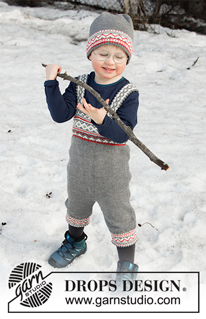





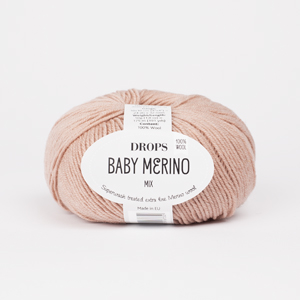








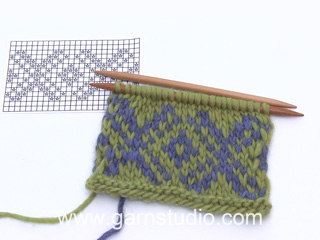
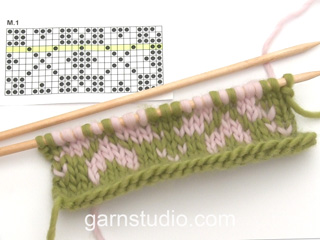
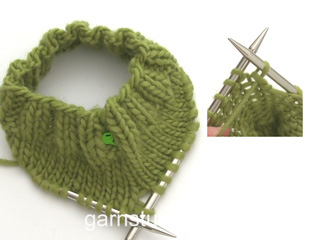
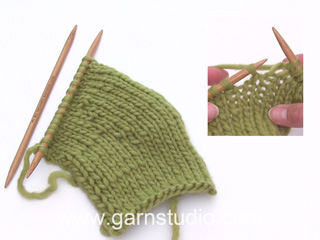





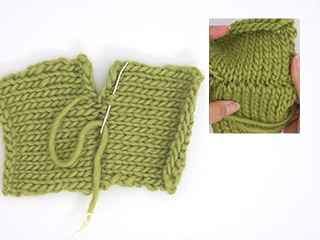
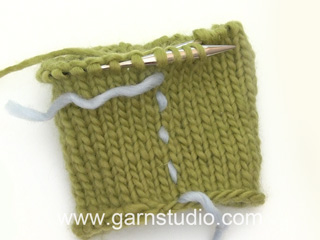
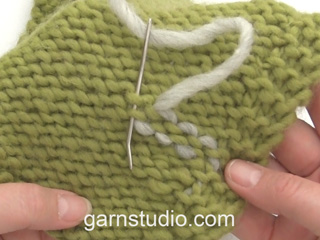
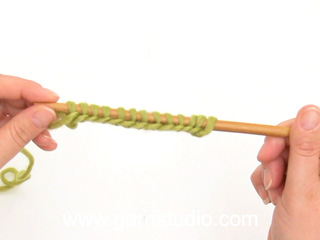
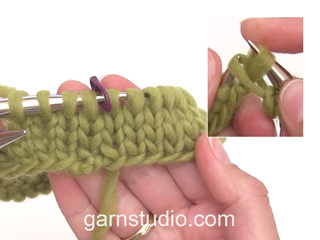
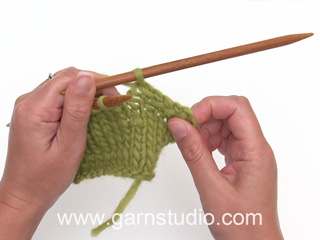


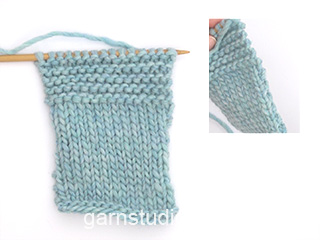
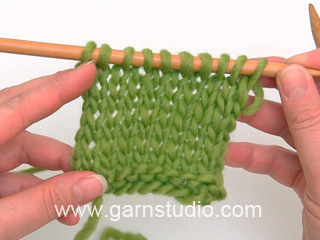























Comments / Questions (5)
Når det skal felles til ben, skal det felles 3 masker på hver side av midt foran og bak (totalt 12m) på en omgang? Eller skal det felles over tre omganger?
10.05.2022 - 21:46DROPS Design answered:
Hej Marianne, maskerne skal felles på en gang og så fortsætter du med benene :)
11.05.2022 - 08:05Bonjour, une fois que les augmentations du pantalon sont faites, comment doit on faire les diminutions? 6 mailles devant et 6 dos? Sur un seul tour? Merci de votre retour Claire marie
02.02.2021 - 19:09DROPS Design answered:
Bonjour Mme Salet, il faut en fait non pas diminue mais rabattre ces 6 mailles , ce sont les mailles de l'entrejambe qui seront ensuite assemblées entre elles (rabattez les 3 mailles avant le marqueur et les 3 mailles après le marqueur au milieu devant et au milieu dos). Bon tricot!
03.02.2021 - 08:32Hallo, danke für die Strickanleitung. Leider sind die Angaben für den Wollverbrauch nicht exakt. Bei Größe 80/86 habe ich lediglich 20g der weißen Wolle gebraucht, es sind aber 100g angegeben. Liebe Grüße
18.12.2020 - 11:47Hvorfor er belegget til beltet 1 cm kortere enn beltet? Monteringen blir jo da så klumpete...
18.04.2019 - 16:58DROPS Design answered:
Hei Monica. Ja belegget strikkes i 10 cm, og er derfor ikke like langt som beltet. Det er selvfølgelig ikke noe i veien for at du strikker belegget lenger om du syntes dette blir penere. God fornøyelse
06.05.2019 - 10:17Die Anleitung ist ungenau. Erst hat die Hose ab Beleg eine Länge von 18cm, und dann sibd es insgesamt plötzlich 40cm. Aber zwischen 18 und 40 wird nicht angegeben, dass weiter gestrickt werden soll. Das sollte geändert werden!!!!! Es gibt auch etwas ungeübte Strickerinnen, die nicht so fit sind. Ich gehöre auch dazu und mur fehlt jetzt ein Stück! Schade!!!
15.10.2018 - 09:29DROPS Design answered:
Liebe Dorothee, die Maßen stimmen: in der 2. Größe stricken Sie 10 cm Belegg + die Bruchkante + 11 cm A.1 (= 22 cm), dann stricken Sie die Hose = 13 cm + 5 cm (Zunahmen) (= 18 cm). Die gesamte Arbeit misst dann 22+18 cm = 40 cm von der Anschlagskante). Viel Spaß beim stricken!
15.10.2018 - 11:10